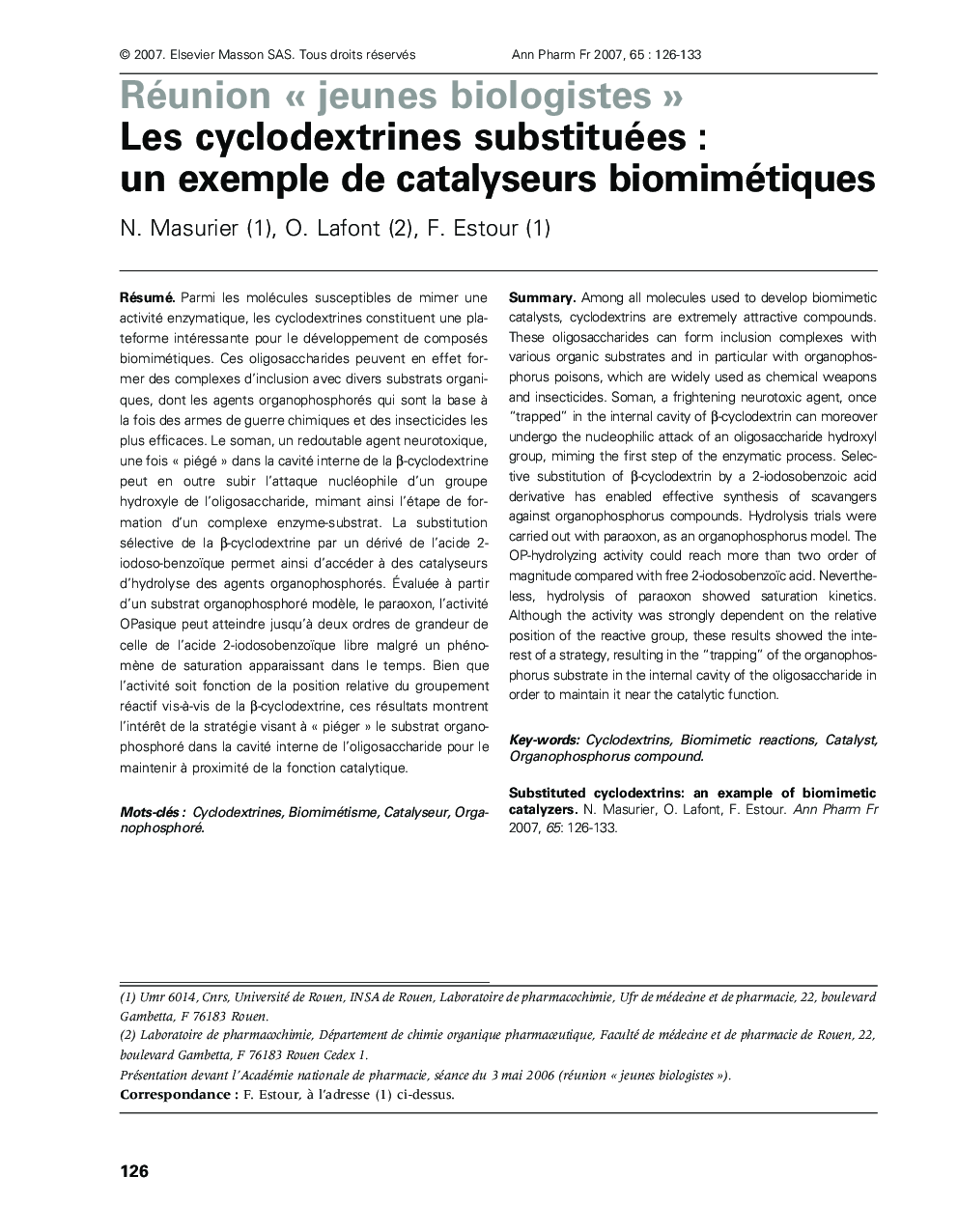| Article ID | Journal | Published Year | Pages | File Type |
|---|---|---|---|---|
| 2478498 | Annales Pharmaceutiques Françaises | 2007 | 8 Pages |
Abstract
Among all molecules used to develop biomimetic catalysts, cyclodextrins are extremely attractive compounds. These oligosaccharides can form inclusion complexes with various organic substrates and in particular with organophosphorus poisons, which are widely used as chemical weapons and insecticides. Soman, a frightening neurotoxic agent, once “trapped” in the internal cavity of β-cyclodextrin can moreover undergo the nucleophilic attack of an oligosaccharide hydroxyl group, miming the first step of the enzymatic process. Selective substitution of β-cyclodextrin by a 2-iodosobenzoic acid derivative has enabled effective synthesis of scavangers against organophosphorus compounds. Hydrolysis trials were carried out with paraoxon, as an organophosphorus model. The OP-hydrolyzing activity could reach more than two order of magnitude compared with free 2-iodosobenzoïc acid. Nevertheless, hydrolysis of paraoxon showed saturation kinetics. Although the activity was strongly dependent on the relative position of the reactive group, these results showed the interest of a strategy, resulting in the “trapping” of the organophosphorus substrate in the internal cavity of the oligosaccharide in order to maintain it near the catalytic function.
Related Topics
Health Sciences
Pharmacology, Toxicology and Pharmaceutical Science
Drug Discovery
Authors
N. Masurier, O. Lafont, F. Estour,
